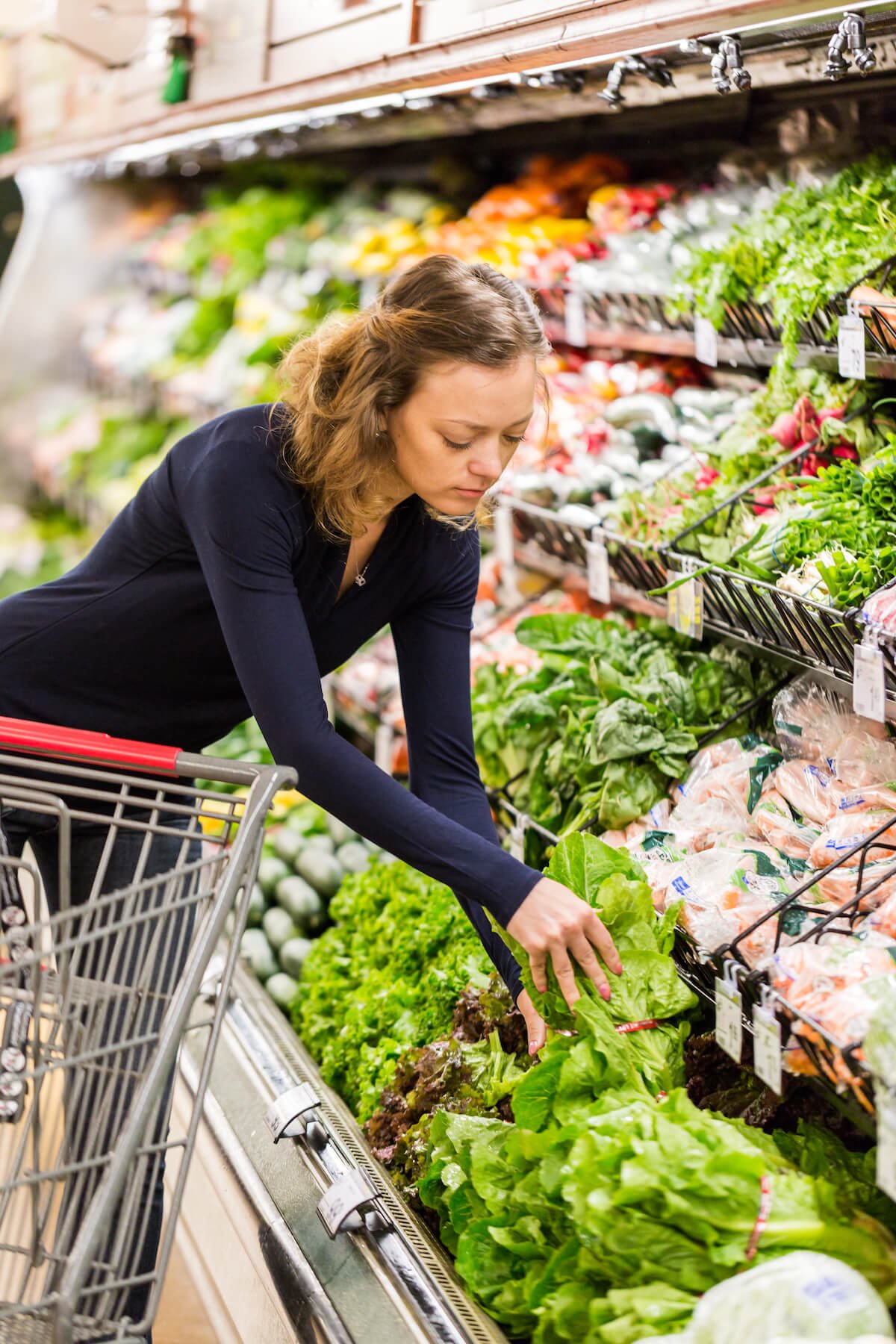Could Seasonal Eating Be The Affordable Answer To Better Tasting Produce?
Just like humans, fruits and vegetables thrive in their own seasons. This is why those tomatoes you bought at the grocery store in December are a dull shade of red, and why you see the most pumpkins available in the fall. When you seek produce that is in season, however, you can fill your plate with an abundance of flavor, maximize its nutrient values, and even help the planet.
A practice as old as agriculture itself, seasonal eating invites you to harmonize with nature. It encourages you to savor the freshest, most vibrant produce that each season offers, nourishing our bodies and souls in the process. And it doesn’t have to be as challenging as it may seem.
What Is Seasonal Produce?
Have you ever munched on strawberries during the cold, winter months just to be let down by its lack of flavor? Or, have you prepared a salad in the summer and found that your cabbage has a bitter taste? This is because the produce you’re seeking isn’t in season.
Whether it’s strawberries and apples or tomatoes and kale, every produce has its own season. If you’ve ever seen the terms “seasonal produce” or “seasonal eating” on a menu, this is referring to the fruits and vegetables that are grown and harvested at specific times of the year when they’re in peak season. When a produce is in season, they’re in their freshest, most flavorful state, and they’re packed with the most nutrients.
Seasonal produce varies for each region. The availability of these fruits and vegetables is determined by the changing seasons, climate, and local growing conditions. For example, while blueberries may only be in season during June and July in southwestern parts of the country, their peak season can begin as early as May and last until August in southeastern regions. If you’re uncertain of what produce is in season next time you compile your grocery list, you can consult a seasonal food guide to determine if your chosen treasure is at its peak tastiness.
Benefits Of Eating Seasonal Produce
Apart from their delicious flavor, there are several benefits of eating fruits and vegetables when they’re in season.
They Have Better Nutritional Value
Although fruits and vegetables can be grown year-round in greenhouses or by creating warmer shelters, produce that is grown locally and harvested in season has better nutritional content than those you would find at chain grocery stores. Seasonal produce is picked at its peak ripeness, which means it’s had ample time to thrive in the preferred growing conditions–like warm and humid weather–and it’s been able to absorb more sun exposure. This results in delicious produce that is packed with higher values of antioxidants, including vitamin C and folate.
It’s Better For The Environment
With constant reminders of the climate crisis that the planet is facing, doing your part to reduce your environmental impact can be overwhelming. However, seasonal eating is one easy way you can take steps towards supporting the environment.
Seasonal produce is typically sourced from local farmers, thereby reducing the need for long-distance transportation–a must-have when importing out-of-season produce from other regions to yours. By eating seasonally, you’re helping to reduce the carbon footprint of your food.
You’re Supporting Your Community
You can find the most fresh and flavorful produce from your local farmers market, and you’re providing direct support to members of your community by helping to support their livelihoods and small-scale growers. This also creates more agricultural-focused jobs within the community, from farming and harvesting to packaging and distribution.
It’s More Cost Effective
In this economy, we’ve all dealt with sticker-shock when we see produce prices at the grocery store. Instead of paying $5 for a tiny carton of blueberries in the winter, wait until they’re in season to shop at a local farmers market, instead of large chain retailers. Because in-season produce typically grows in abundance, and it doesn’t have to travel thousands of miles to reach your plate, local fruits and vegetables can be more affordable.
How To Determine What’s In Season
One of the easiest ways to determine what’s in season for your region is to peruse your local farmers market. Here, you also have the opportunity to talk to local farmers, ask them about their produce, and even get suggestions on new ways to prepare your favorite fruits and vegetables.
If you don’t have the opportunity to explore locally, follow this guide to help determine which produce is in season near you.
Spring
As the trees come back to life and temperatures start to rise, we begin to see a variety of fresh, vibrant produce. These warm spring months signify the beginning of bountiful berry seasons, herb harvests, and sweet-tasting vegetables, from asparagus to peas.
Fruits
Strawberries
Rhubarb
Apricots
Pineapples
Cherries
Mangoes
Lemons
Limes
Vegetables
Asparagus
Artichokes
Broccoli
Cabbage
Cauliflower
Peas
Spinach
Radishes
Summer
While you may despise the hot, sticky weather that summer brings, many of your favorite fruits and vegetables thrive in this environment. During the summer months, you’ll see harvests of berries, peppers, tomatoes, herbs, and many more treasures just waiting to be plated.
Fruits
Bananas
Berries (strawberries, blueberries, blackberries, and raspberries)
Cantaloupe
Grapes
Melons (honeydew, crenshaw, and casaba)
Nectarines
Peaches
Plums
Watermelon
Vegetables
Bell Peppers
Cabbage
Chili Peppers (jalapenos, poblanos, and serranos)
Corn
Cucumbers
Eggplant
Green Beans
Tomatoes
Zucchini
Fall
The brisk fall air brings pumpkin-flavored everything, seasonal desserts, and a rich variety of fruits and vegetables at their peak. Plus, it’s the perfect time to take a trip to your local pumpkin patch or apple orchard to harvest your own!
Fruits
Apples
Cranberries
Figs
Grapes
Pears
Vegetables
Beets
Carrots
Cabbage
Cauliflower
Mushrooms
Pumpkins
Squash (butternut and acorn)
Sweet potatoes
Winter
Although winter tends to be more limited in terms of fresh produce, there are still plenty of options to diversify your weekly menu.
Fruits
Citrus Fruits (oranges and grapefruits)
Kiwi
Persimmons
Pomegranates
Vegetables
Beets
Broccoli
Brussel Sprouts
Carrots
Cabbage
Cauliflower
Celery Root
Fennel
Kale
Leeks
Mushrooms
Spinach
Tips To Enjoy Seasonal Eating
Seasonal eating in months where produce is limited can be a challenge, however, it’s not impossible. If you’re struggling with curating a menu, consider these tips.
Opt for Storage Varieties
Next time you’re shopping, look for produce that is known for its long shelf life. When stored properly, carrots, potatoes, and squashes–like spaghetti or butternut–can last for several weeks or even months.
Preserve Your Produce
Just because you harvested roma tomatoes from your summer garden doesn’t mean you can’t enjoy them in the winter, too! Use preservation methods like canning, freezing, and pickling to extend the shelf life of seasonal fruits and vegetables. When preserved during peak season, you can still enjoy their rich flavors and high nutrient levels later.
Experiment With Your Meals
If you find yourself tired of cooking the same squash and mushroom dishes in the winter, try mixing up your meals by getting creative with your cooking methods. Methods like roasting, grilling, braising, and slow-cooking can enhance the flavor and texture of seasonal produce, making them more enjoyable for your palate.











